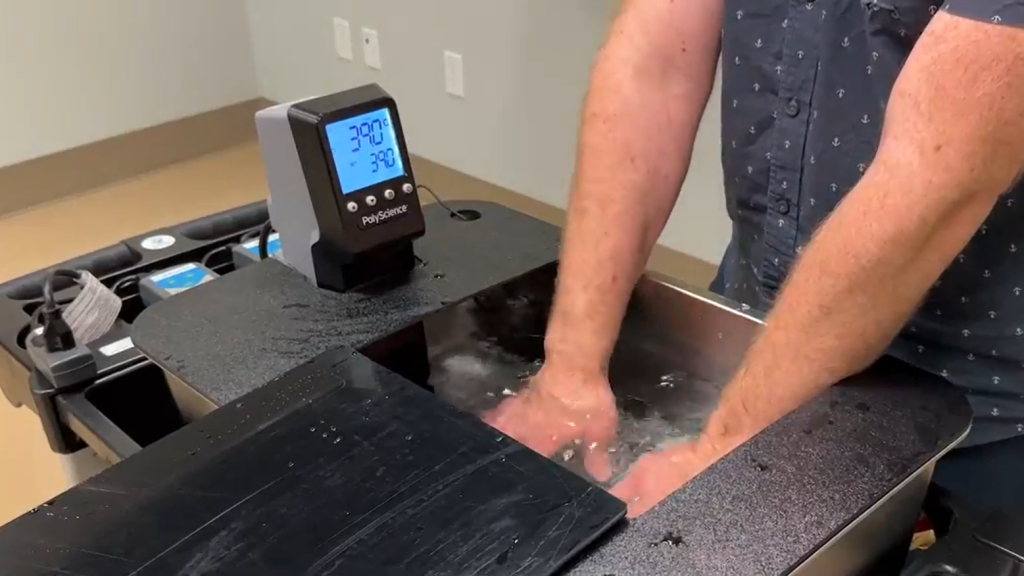University of Alberta unveils frostbite re-warmer prototype

Posted December 2, 2024 7:12 pm.
Last Updated December 2, 2024 7:13 pm.
Frostbite treatments may start looking different at hospitals if a device made in Edmonton can warm up the right crowd.
The University of Alberta has created a prototype frostbite re-warmer that is meant to improve upon the efficiency of traditional frostbite rewarming methods, like warm towels and buckets of water, while freeing up emergency room resources.
Research assistant Daniel Tiwana says re-warming a frostbitten limb takes about 22 minutes using traditional methods.
“It also takes up a lot of staff resources, because we have to have a nurse with that patient constantly ding that. They can’t be free to go do other things, compared to our device. You can just stick their hands and feet in and they’re good to go,” explained Tiwana.
The U of A’s frostbite treatment only needs about nine minutes, as circulators heat up and keep the water moving to maintain a steady temperature.
Rapid re-warming is the most effective way to treat frostbite, and is key is saving healthy tissue from further damage needing skin grafts and limbs from amputation.
A doctor can’t tell how bad your frostbite is until it’s thawed, making those minutes crucial.
“Delays with re-warming are associated with worse outcomes. Worse outcomes are a greater degree of amputation. Maybe not a tip of a finger, but a full finger. Maybe losing a portion of your hand. Same with your toes and your feet. Really turning people into amputees,” said Matthew Douma, a adjunct professor of critical care medicine at the University of Alberta.
The team at the U of A hopes this will solve problems with treating frostbite that have existed for ages, saying warm towels and buckets of water are fine for treating minor cases at home, but insufficient in the er.
“There shouldn’t be so much variability in the treatment of something that we see so commonly and have such set-out protocols for,” said Tiwana.
The rewarming devices are being bought by some hospitals across canada, but are expected to undergo more testing by those facilities before being formally used in treatments.








